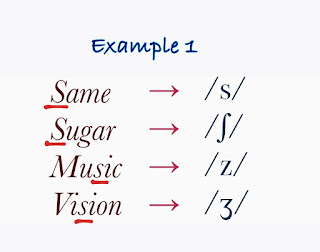Write as you Speak!
English: Not a 'Phonetic' Language
Introduction
Some languages are "phonetic". That means you can look at a written word and know how to pronounce it. Or you can hear a word and know how to spell it. With phonetic languages, there is a direct relationship between the spelling and the sound.
It is important to understand that English is not a phonetic language. So we often do not say a word the same way it is spelled.
Some words can have the same spelling but different pronunciation for example:
- I like to read [ri:d]
- I have read [red] that book
- I have read [red] that book
- Red [red] is my favorite color
English wasn’t always this way. There are a few reasons for this.
- Since English started being written down, the language has gone through a number of phonetic changes, most notably the great vowel shift.
- We've had English-language dictionaries for nearly 500 years - these preserve spellings even when the pronunciation of the word has changed
- English has a lot of loanwords from other languages, and we like to preserve the spelling when we take the word (unlike many other languages)
What is a Phonetic Language?
When there is one-to-one correspondence between the letter we write and their sound we speak. In most Indian languages one letter in writing stands for one sound in speech, and one sound in speech is represented by one letter in writing. These languages are called ‘phonetic’. Example: Malayalam, Hindi etc.
What is an Unphonetic Language?
When there is no one-to-one correspondence between the letter we write and their sound we speak. It is well-known that in English one-to-one correspondence between letters and sound does not exist. Below pictures are two of the many examples.
In the above example, you have noticed that 's' produces the sound /s/ in ‘same’, /ʃ/ in ‘sugar’, /z/ in ‘music’, /ʒ/ in vision’. The same letter produces four different sounds.
In the second example, on the other hand you can see that the same sound /s/ is produced by four different letters.
This is why English is said to be an ‘unphonetic’ language. So, it is not always possible to decide how to pronounce a word by looking its spelling. However, in the system of phonemic symbols one symbol stands for one sound.
Phonemic Symbols
Despite there being just 26 letters in the English language there are approximately 44 unique sounds, also known as phonemes. The symbols used to represent these 44 sounds are called as phonemic symbols. 44 phonemic symbols are divided into 12 Vowels, 8 Diphthongs and 24 Consonants.




No comments:
Post a Comment